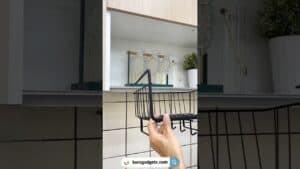Smart Homes are here to stay. They have become an integral part of our homes. Between our smartphones, laptops, and tablets, smart homes have made our lives easier. With the future of smart homes ranging beyond smart lighting, smart thermostats, and security cameras, let’s take a look at smart trends in homes that will make life much more convenient and easier for homeowners.
What does smart home mean and what are the benefits of having one
Smart homes are becoming an increasingly popular alternative to regular homes.
A smart home is one that has integrated technology, such as smart lights, motion sensors, thermostats, locks, and speakers.
These technology devices work together to create a system, which allow you to control every aspect of your home. You can use your phone or computer to quickly control your home, making it more convenient and comfortable.
Smart homes have many advantages. Here are just a few of the benefits they provide:
Save money: Smart homes allow you to cut your energy costs and reduce your impact on the environment. You can manage your home’s temperature more efficiently, using smart thermostats to manage your heating and cooling systems remotely. You can also control the lights in your home remotely, ensuring that you only use them when necessary.
Increase comfort and convenience: Smart homes allow you to control your home’s temperature, lighting, security, and other features remotely. You can access this information from anywhere, even when you’re away on vacation.
Protect your home: Smart lights, locks, and motion sensors allow you to monitor your home and protect it from intruders. If your house gets too hot, you don’t need to worry about coming home to an uncomfortable house. If motion is detected at home, you can lock your doors instantly from your phone.
What smart home trends you need to keep an eye out for in 2023
Smart home technology has completely transformed the way we interact with our homes. Whether we use a smart speaker or a smart speaker speaker to turn on the lights, we use smart technology every day.
However, with new smart home technology comes new trends that we are all eagerly waiting to see. Here are a few smart home trends you should look out for in 2023:
Home security: There’s no doubt that smart home technology has improved home security. Nowadays, homeowners have access to numerous security cameras that can help them keep an eye on their home. According to research firm Statista, smart security is set to reach $94.18 billion by 2023.
Smart kitchen appliances: Smart kitchen appliances are still a work in progress, but 2023 is the year that these appliances are expected to reach mainstream popularity. Research firm Statista reported that smart kitchen appliances are expected to reach $10.66 billion by 2023.
Smart lighting: Smart lighting has already become a staple smart home technology, but 2023 is the year that smart lighting is expected to become even more popular. According to research firm Statista, smart lighting is expected to hit $31.18 billion by 2023.
Advantages of having a smart home
Smart home systems can be a convenient addition to your lifestyle, allowing you to control your home’s functions and security features remotely. These systems are especially useful when you’re away from home, allowing you to lock doors, switch off the lights, and arm security systems from any location!
Smart home technology has several advantages over traditional security systems, including:
Increased security: You can control your home’s locks and lights remotely, making it more difficult for intruders to break in. You can also set up a security camera in your home’s driveway or front garden, giving you the ability to monitor activity around your home when you’re not there.
Increased convenience: When you leave your home, the first thing you want to do is lock your doors and turn off all the lights. With a smart home system, you can do this remotely from the convenience of your smartphone. You can also control your thermostat and security system when you’re away from home, helping to save more energy and money.
The future of smart home technology
The future of smart home technology
The future of smart home technology depends on several factors. One factor is the cost of implementing smart home technology. Currently, the average cost of installing smart home technology is $3,000. However, costs are expected to decrease as technology advances.
Another variable is the cost associated with running smart home technology. Currently, the average monthly cost in running smart home technology is $50. However, as technology improves and the cost to run it decreases, this is expected to increase.
Another factor that influences the future of smart home technology is convenience. Currently, the average homeowner spends 12 hours per week on household chores. This is expected to increase as smart home technology develops.
We hope you enjoyed this article. Let us know what you think about the smart home trends in the comments section. Do you have any questions about smart homes? I would love to hear from you.









